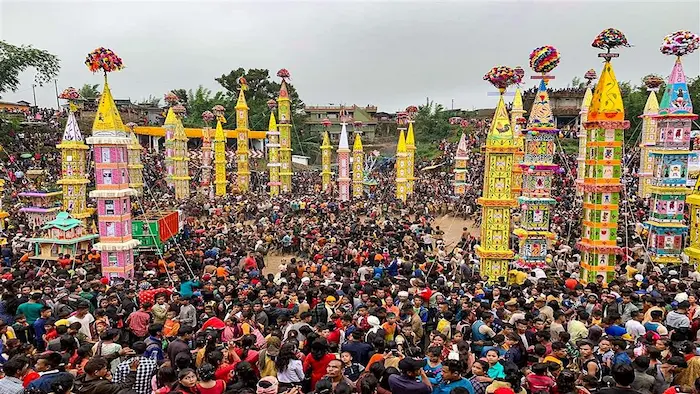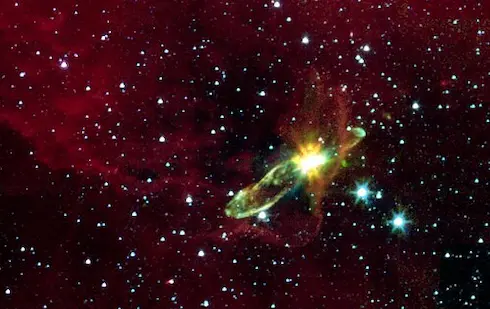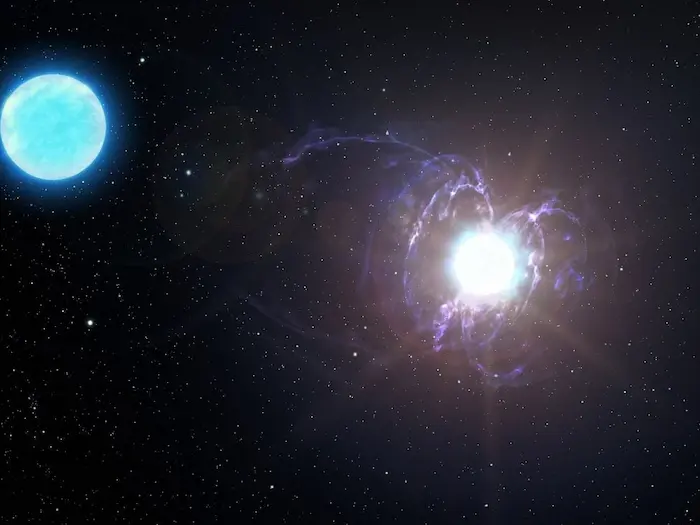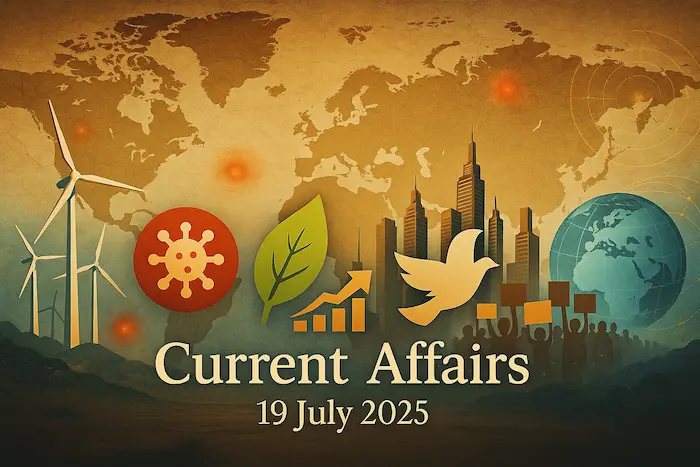1. Tipu Sultan and the Anglo-Mysore Wars (1767–1799) – History & Culture

Why in News?
The removal of Tipu Sultan, Haidar Ali, and the Anglo-Mysore Wars from the NCERT Class 8 Social Science textbook has sparked criticism and debate. The move raises questions about how colonial resistance and native rulers are represented in school education.
Historical Context & Significance
Haidar Ali – Rise and Reforms
- Early Life: Began as a horseman in the Mysore army; became de facto ruler in 1761.
- Military Reforms:
- Adopted Western military tactics with French support.
- Set up arms factories and upgraded cavalry and artillery.
- Pioneered the use of iron-cased Mysorean rockets, which later influenced British Congreve rockets.
- Administrative Measures:
- Implemented a new calendar.
- Introduced land revenue reforms.
- Minted coins in gold, silver, and copper with Persian inscriptions.
- Promoted industries like silk production.
- Proposed early irrigation projects like the Kannambadi Dam.
- Religious Policy:
- Though a devout Muslim, he patronized Hindu temples and mathas.
- Faced allegations of religious intolerance in certain annexed areas.
The Four Anglo-Mysore Wars
1. First Anglo-Mysore War (1767–1769)
- Coalition: British + Marathas + Nizam vs. Haidar Ali.
- Outcome: Treaty of Madras (1769) – status quo restored; British promised support in case of future attacks (later violated).
2. Second Anglo-Mysore War (1780–1784)
- Trigger: British violated Treaty of Madras.
- Alliance: Haidar + Marathas + Nizam.
- Outcome: Treaty of Mangalore (1784) – both sides returned conquered territories; one of the last treaties where Indian powers dictated terms.
3. Third Anglo-Mysore War (1790–1792)
- Cause: Tipu Sultan attacked Travancore, a British ally.
- British led by Lord Cornwallis.
- Outcome: Treaty of Seringapatam (1792) – Tipu ceded half his territory and paid ₹3 crore.
4. Fourth Anglo-Mysore War (1799)
- Strategy: Lord Wellesley isolated Tipu diplomatically.
- Tipu Sultan killed defending Seringapatam on 4 May 1799.
- Marked the end of organized native resistance in South India.
Aftermath & Legacy
- Collapse of Resistance: Tipu’s death marked the decline of effective military opposition in the South.
- British Dominance: Mysore brought under Subsidiary Alliance; Wodeyars restored as puppet rulers.
- Territorial Rearrangement: Nizam received Gooty and Gurramkonda. Marathas declined land offers.
- Administrative Changes:
- Mysore under direct British rule in 1831 for alleged misrule.
- Restored to Wodeyars in 1881 under Lord Ripon through a constitutional monarchy.
Exam Connect – Possible Questions
Prelims
1. The Treaty of Mangalore was signed after which Anglo-Mysore War?
A. First
B. Second
C. Third
D. Fourth
Answer: B. Second
2. Tipu Sultan was killed during the defence of which city?
A. Bangalore
B. Arcot
C. Seringapatam
D. Travancore
Answer: C. Seringapatam
3. Which of the following innovations is associated with Haidar Ali?
A. Cotton textile mills
B. Iron-cased rockets
C. Zamindari system
D. Regulating Act
Answer: B. Iron-cased rockets
Mains
1. “The resistance offered by Tipu Sultan and Haidar Ali was not merely military but also administrative and ideological.” Discuss the statement with reference to Anglo-Mysore Wars.
2. Examine the role of regional powers like the Kingdom of Mysore in resisting colonial expansion in the 18th century. What were the outcomes and limitations of their resistance?
3. Evaluate the significance of the Anglo-Mysore Wars in the establishment of British supremacy in South India.
2. Behdeinkhlam Festival Celebrated in Meghalaya – Indian Society

Why in News?
The Behdeinkhlam Festival, a major cultural and spiritual event of the Pnar (Jaintia) community in Meghalaya, was recently celebrated in Jowai, West Jaintia Hills. The festival reflects the community’s religious identity, agrarian traditions, and social unity.
Key Highlights of the Behdeinkhlam Festival
| Aspect | Details |
|---|---|
| Community | Pnar (Jaintia) tribe of Meghalaya |
| Religion | Niamtre (indigenous faith) |
| Location | Jowai, West Jaintia Hills, Meghalaya |
| Timing | Mid-July, after sowing season |
| Purpose | Drive away plague/evil spirits; pray for a good harvest and well-being |
Major Rituals & Cultural Practices
- Role of Women:
Women offer food to ancestors but do not participate in dancing rituals, reflecting gender-specific spiritual roles in tribal practices. - Dolois (Priests):
Perform central rituals aimed at cleansing the community and warding off diseases or evil influences. - Beating of Rooftops:
Youth strike rooftops with bamboo sticks—a symbolic gesture to drive out malevolent spirits. - Rots:
- Tall, 30–40 ft decorated bamboo structures.
- Often themed around social issues (like unity, morality, or community well-being).
- Paraded around town, reflecting social commentary and shared values.
- Khnong Ritual:
A team sport-like event where large wooden beams are pulled and immersed in mud—symbolizing cleansing and sacrifice. - Dad-Lawakor:
A traditional game resembling football. Its outcome is seen as a predictor of agricultural prosperity in the coming season. - Culmination:
Ends with mass dancing at Wah Aitnar pool, accompanied by traditional drums and pipes—a vibrant celebration of communal unity and spirituality.
Cultural and Societal Significance
- Reinforces community identity and solidarity through shared rituals.
- Celebrates the link between agriculture and religion in tribal societies.
- Showcases India’s intangible cultural heritage, especially from the North-East.
- Demonstrates ecological sensitivity by linking festivities with the agrarian calendar.
Exam Connect – Possible Questions
Prelims
1. The Behdeinkhlam Festival is primarily celebrated by which community?
A. Garo
B. Khasi
C. Pnar (Jaintia)
D. Mizo
Answer: C. Pnar (Jaintia)
2. In which Indian state is the Behdeinkhlam Festival celebrated?
A. Assam
B. Nagaland
C. Meghalaya
D. Manipur
Answer: C. Meghalaya
3. The “Dad-Lawakor” game played during Behdeinkhlam resembles which modern sport?
A. Hockey
B. Cricket
C. Volleyball
D. Football
Answer: D. Football
Mains
1. “Festivals are vital expressions of community identity and ecological consciousness in tribal societies.” Examine the significance of the Behdeinkhlam Festival of Meghalaya in this context.
2. Discuss the role of traditional festivals like Behdeinkhlam in preserving indigenous religious and cultural practices in North-East India.
3. Highlight the gender-specific roles and religious symbolism in the celebration of the Behdeinkhlam Festival. What does it reveal about tribal societal structures?
3. Government vs Social Media Platforms on Safe Harbour Doctrine – Polity

Why in News?
The Union Government has defended its broad interpretation of Section 79 of the IT Act in a case before the Karnataka High Court, following a legal challenge by social media platform X (formerly Twitter). The platform has questioned the legitimacy of content takedown orders and criticized the Sahyog Portal as a tool for censorship.
Key Legal Provisions Involved
Section 79 – Safe Harbour Provision (IT Act, 2000)
- Provides conditional immunity to intermediaries (e.g., social media platforms) from legal liability for user-generated content.
- Protection does not apply if intermediaries:
- Don’t act upon government-issued takedown notices.
- Fail to exercise due diligence as required under IT rules.
Section 69A – Blocking Powers of the Government
- Grants power to the Central Government to block content in the interest of sovereignty, integrity, public order, or security.
- Requires:
- Procedural safeguards
- Reasoned orders
- Review committees
Key Issues in the Case
| Concern Raised by X (Twitter) | Government’s Stand |
|---|---|
| Use of Section 79 to issue blocking orders, which should only come under Section 69A | Section 79 allows broader action to address unlawful content |
| Sahyog Portal called a “censorship portal” lacking transparency | Portal aims to coordinate online safety under the Indian Cyber Crime Coordination Centre (I4C) |
| Objection to amplified government control over online speech | Algorithms amplify harmful content without editorial checks unlike traditional media |
Constitutional Angle – Article 19(1)(a) vs 19(2)
- Article 19(1)(a): Guarantees freedom of speech and expression.
- Article 19(2): Permits reasonable restrictions in the interest of:
- Sovereignty & integrity of India
- Security of the state
- Public order, decency or morality
- Contempt of court, defamation, incitement to offence
The current case tests the limits of reasonable restrictions in the digital age, where platforms host vast volumes of user content, and moderation policies directly affect free speech.
What is the Sahyog Portal?
- Developed under I4C (Indian Cyber Crime Coordination Centre), Ministry of Home Affairs.
- Intended to streamline content regulation and flag unlawful content.
- As of March 2025:
- 38 intermediaries (including major platforms) have joined.
- X has refused, citing legal overreach and lack of transparency.
Exam Connect – Possible Questions
Prelims
1. The Safe Harbour provision under the IT Act is primarily outlined in:
A. Section 66A
B. Section 69
C. Section 79
D. Section 43A
Answer: C. Section 79
2. Which Article of the Indian Constitution deals with “reasonable restrictions” on freedom of speech?
A. Article 14
B. Article 19(2)
C. Article 21
D. Article 32
Answer: B Article 19(2)
3. The Sahyog Portal is operated under which government initiative?
A. Digital India
B. Indian Cyber Crime Coordination Centre (I4C)
C. BharatNet
D. National e-Governance Division
Answer: B. Indian Cyber Crime Coordination Centre (I4C)
Mains
1. “The Safe Harbour Doctrine is under stress in India’s digital governance framework.” Examine the recent legal debates around Section 79 and the role of social media platforms as intermediaries.
2. Discuss the constitutional and legal dimensions of regulating online content in India. In this context, evaluate the balance between freedom of expression and public interest.
3. “Digital platforms today play the role of both publisher and intermediary.” Critically assess the challenges this duality presents in the context of India’s legal and regulatory environment.
4. What is a Protostar? – Science & Technology

What is a Protostar?
Definition
A protostar is an early phase in the lifecycle of a star. It forms when a dense region in a molecular cloud collapses under gravity, but before hydrogen fusion begins in its core.
Key Characteristics of Protostars
| Feature | Description |
|---|---|
| Formation Trigger | Contraction of a giant molecular cloud in the interstellar medium |
| Structure | Composed of gas and dust, often surrounded by an opaque dust envelope |
| Visibility | Cannot be seen in visible light due to dust; observed via radio/IR waves |
| Duration | Formation may take from 100,000 to 10 million years, depending on mass |
| Evolution | Becomes a pre-main-sequence star once fusion begins |
Stages of Star Formation: From Cloud to Star
- Molecular Cloud Core Formation: Local density fluctuations in a molecular cloud lead to gravitational collapse.
- Protostar Stage: A dense, hot core forms, accumulating mass from the surrounding cloud.
- Pre-Main-Sequence Stage:
- For Sun-like stars, this phase is called the T-Tauri stage.
- Star contracts, heats up, and rotates.
- Main Sequence Star: When hydrogen fusion starts in the core, it becomes a fully formed star on the Hertzsprung-Russell diagram.
The Recent Discovery (Why in News)
- Scientists at the Indian Institute of Space Science and Technology (IIST) detected circularly polarized radio emissions from a massive protostar.
- This is notable because:
- It provides evidence of magnetic fields near young stellar objects.
- Enhances understanding of stellar magnetism, accretion disks, and outflow processes.
Importance of Studying Protostars
- Crucial for understanding stellar evolution.
- Offers clues about planetary system formation.
- Helps refine astrophysical models involving mass, rotation, and radiation.
Exam Connect – Possible Questions
Prelims
1. A protostar is best described as:
A. A star in its final phase of life
B. A planet-like body with no fusion
C. A star that has begun hydrogen fusion
D. A gas body in the early phase before fusion begins
Answer: D. A gas body in the early phase before fusion begins
2. T-Tauri stars are:
A. Failed stars that never ignited fusion
B. Pre-main-sequence stars with mass similar to the Sun
C. High-mass stars in the black hole stage
D. Neutron stars emitting radio waves
Answer: B. Pre-main-sequence stars with mass similar to the Sun
3. Which Indian institute was recently involved in the discovery of emissions from a protostar?
A. ISRO
B. IISc Bengaluru
C. IIST Thiruvananthapuram
D. Aryabhatta Research Institute
Answer: C IIST Thiruvananthapuram
Mains
1. “The study of protostars is crucial for understanding the lifecycle of stars and planetary system formation.” Discuss with reference to recent observations made by Indian astronomers.
2. Explain the process of star formation from molecular clouds to main-sequence stars. How do protostars fit into this lifecycle?
3. India’s progress in space research is not just limited to missions like Chandrayaan or Gaganyaan.
Discuss how institutes like IIST contribute to fundamental astrophysical research with suitable examples.
5. IIST Scientists Detect Circular Polarisation near a Massive Protostar – Science & Technology

Why in News?
Researchers at the Indian Institute of Space Science and Technology (IIST) have detected circularly polarized radio emissions near a massive protostar named IRAS 18162-2048, located approximately 4,500 light-years from Earth. This is the first direct evidence of magnetic fields originating from such a protostar.
What is a Protostar? (Refresher)
| Aspect | Details |
|---|---|
| Definition | An early-stage star, still accreting gas and dust from its surrounding cloud |
| Phase | Lies between a collapsing molecular cloud and a fully formed main-sequence star |
| Energy Source | Gravitational contraction (no fusion yet) |
| Observation Difficulty | Obscured by dense dust clouds, hence observed via radio and IR waves |
| Associated Phenomena | Often emits bipolar jets of gas from poles |
Key Highlights of the Discovery
Magnetic Field Detection
- This is first-time observational evidence showing magnetic fields emanating from a protostar itself, not just its surroundings.
- The observed magnetic field strength is estimated to be ~100 times stronger than Earth’s.
Circular Polarisation
- Circularly polarized radio waves are rare and require precise instrumentation to detect.
- It confirms the presence of well-aligned magnetic fields and helps in mapping magneto-hydrodynamic (MHD) behavior.
About IRAS 18162-2048
- A massive protostar expected to evolve into a star 8–10 times the Sun’s mass.
- Located within a dense stellar nursery—hence invisible to the naked eye or optical telescopes.
Scientific Significance
| Scientific Impact | Explanation |
|---|---|
| Star Formation Theory Support | Magnetic fields likely help in angular momentum transfer, crucial for accretion |
| Jet Ejection Mechanism | Helps explain bipolar jets from stars and even black holes |
| Cross-field Implications | Reinforces similar jet physics across protostars, pulsars, and AGNs |
Exam Connect – Possible Questions
Prelims
1. Which of the following best describes a “protostar”?
A. A star that has completed its fusion cycle
B. A star in the black hole phase
C. A forming star that has not yet begun nuclear fusion
D. A white dwarf in binary orbit
Answer: C. A forming star that has not yet begun nuclear fusion
2. The discovery of circularly polarized radio emissions is important because it:
A. Proves the existence of dark matter
B. Confirms nuclear fusion in protostars
C. Indicates strong and structured magnetic fields
D. Detects gravitational waves
Answer: C. Indicates strong and structured magnetic fields
3. IRAS 18162-2048, where magnetic fields were recently detected, is classified as:
A. A T-Tauri star
B. A red giant
C. A pulsar
D. A massive protostar
Answer: D. A massive protostar
Mains
1. “The detection of magnetic fields in protostars marks a milestone in our understanding of stellar birth.” Discuss the significance of this discovery in the context of star formation and India’s contributions to space research.
2. What is circular polarization in electromagnetic radiation? How has its recent detection near a protostar contributed to our knowledge of astrophysical processes?
3. India’s advancements in fundamental scientific research are as crucial as applied missions like Chandrayaan.
Examine this statement in light of recent discoveries by Indian institutions in the field of astronomy.
6. What is Chronic Venous Insufficiency (CVI)? – Science & Technology

What is Chronic Venous Insufficiency (CVI)?
Definition:
CVI is a circulatory disorder where the veins in the legs fail to return blood effectively to the heart. This leads to blood pooling in the lower limbs, causing swelling, pain, and other complications.
How Does CVI Occur?
- Normal Function: Leg veins have one-way valves that help push blood upward toward the heart.
- In CVI: These valves become damaged or weak, leading to backflow (venous reflux), which causes blood accumulation in the veins.
- This results in chronic venous pressure and related symptoms.
Prevalence and Risk Factors
| Aspect | Details |
|---|---|
| Global Impact | Affects around 1 in 20 adults, more common among older populations |
| Major Risk Factors |
- Obesity
- Pregnancy
- Family history of venous disease
- Sedentary lifestyle
- Previous leg injuries or DVT (Deep Vein Thrombosis)
Symptoms of CVI
- Heaviness or aching in the legs
- Swelling (especially after prolonged standing)
- Varicose veins
- Night-time cramps
- Skin discoloration or thickening
- In advanced stages: Venous leg ulcers
Treatment & Management
| Method | Details |
|---|---|
| Lifestyle Modifications | Regular walking, leg elevation, weight loss |
| Compression Therapy | Use of compression stockings to promote blood return |
| Medications | To improve venous tone and reduce inflammation |
| Surgical/Interventional Options | For severe cases – sclerotherapy, laser therapy, or vein stripping |
Scientific and Public Health Significance
- CVI is a classic example of a non-communicable vascular disease linked to lifestyle.
- Although not life-threatening, it reduces quality of life significantly.
- Increasing prevalence due to aging population and sedentary lifestyles makes it a growing public health concern.
Exam Connect – Possible Questions
Prelims
1. Chronic Venous Insufficiency (CVI) is primarily caused due to:
A. Blockage in arteries
B. Weakness in the valves of leg veins
C. Low red blood cell count
D. Lack of oxygen in tissues
Answer: B. Weakness in the valves of leg veins
2. Which of the following is not a common symptom of CVI?
A. Varicose veins
B. Leg swelling
C. Sudden chest pain
D. Leg ulcers
Answer: C. Sudden chest pain
3. A common non-surgical treatment for CVI includes:
A. Radiation therapy
B. Blood transfusion
C. Compression stockings
D. Bone marrow transplant
Answer: C. Compression stockings
Mains
1. “Chronic Venous Insufficiency (CVI), though not fatal, represents a major lifestyle-related vascular disorder.” Discuss the causes, symptoms, and treatment options available for CVI.
2. Highlight the growing burden of lifestyle-related non-communicable diseases in India. What role can preventive healthcare and public awareness play in managing such conditions?
3. With reference to CVI and other circulatory disorders, examine the importance of early diagnosis and lifestyle intervention in managing non-communicable diseases.

